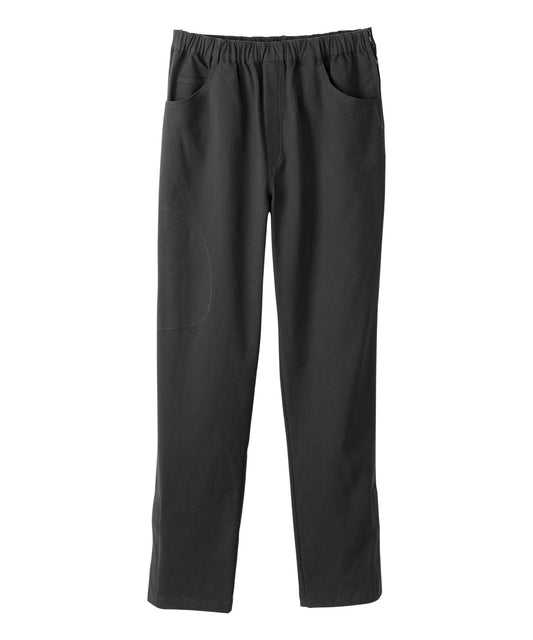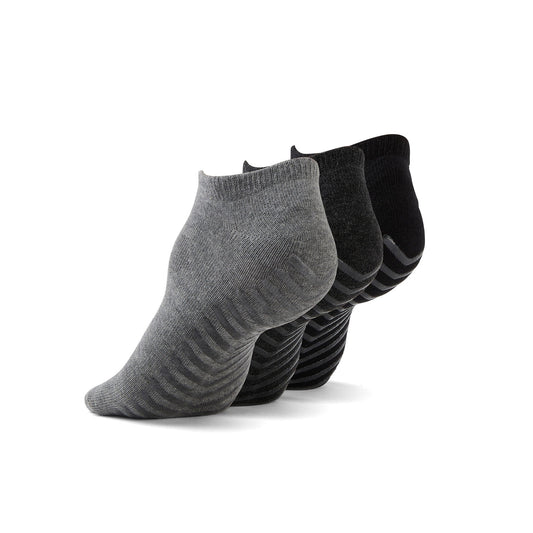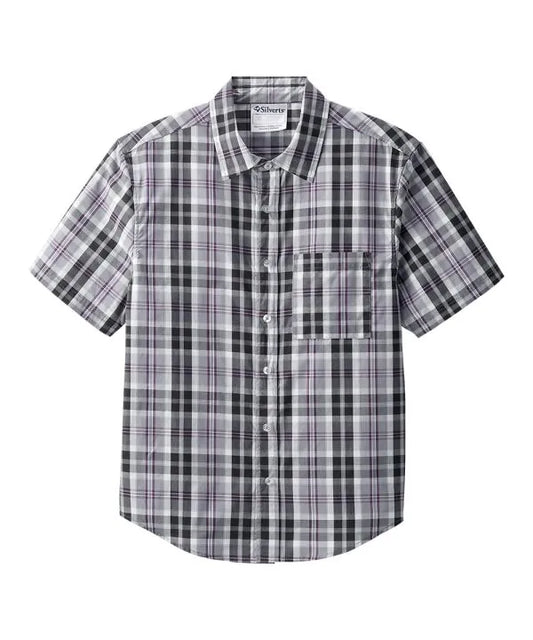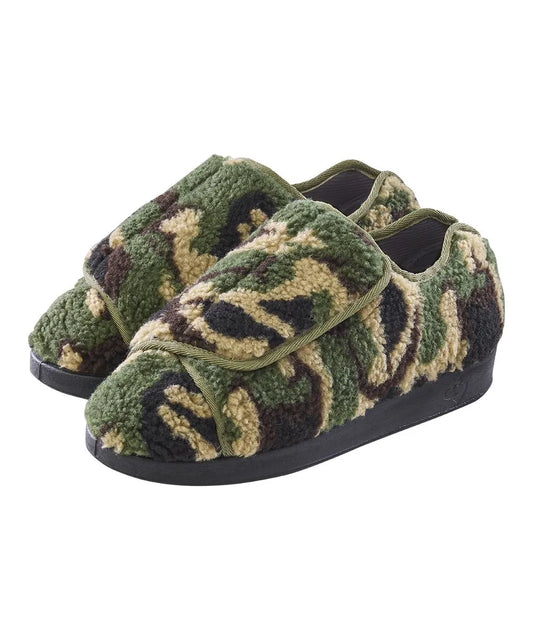Written by Tara Chen & reviewed by Nicole Fernandes
Parkinson’s disease is a degenerative disease that impacts the region of the brain, called the basal ganglia, which controls body movements. It is one of the most common brain conditions affecting motor control and is most often found in individuals older than 60 years of age. Parkinson’s results in difficulties with walking, maintaining balance, and moving. It also causes tremors, stiffness, poor posture, and more. These challenges can make shopping for clothes and the process of getting dressed more difficult to complete.
However, with the right strategies and awareness, finding suitable clothing that accommodates the unique needs of individuals with Parkinson's can become more manageable. In this blog post, we will provide you with a comprehensive Parkinson's clothing shopping guide, offering valuable tips and tricks to help you navigate the process successfully.
1. Prioritize comfort and flexibility
When shopping for clothing as a person with Parkinson's disease, comfort and flexibility should be your primary priorities. Fabrics made from soft and breathable materials, such as cotton or jersey, will provide ease of movement and minimize irritation against the skin. On the other hand, fabrics such as polyester or rayon are synthetic and not breathable. Polyester may not allow for proper air circulation, may lead to discomfort, and restrict movements. Rayon may be soft but it does not stretch or allow for movements. Therefore, the type of fabrics chosen should be stretchable and allow for flexibility, which will accommodate any involuntary movements associated with Parkinson's.
2. Choose adaptive clothing
Adaptive clothing has adjustments made to make wearing and putting on the garment more easily. These types of clothes are designed to accommodate the needs of different individuals. For people with Parkinson’s, adaptive clothing can make life easier and accommodate mobility challenges. They also help the wearer feel more independent in their daily life.
Clothing with magnetic closures, Velcro, and large buttons can help dressing easier for individuals with Parkinson’s because it addresses the issues of limited dexterity and hand tremors. Additionally, adaptive clothing may include side openings so that the individual does not need to twist or extend the body to get dressed or undressed.
For example, the Men’s Reversible Front Vest with Magnetic Closure from June Adaptive is a stylish vest that has magnetic closures to make it easier for the individual to put on and fasten up. It can also be worn with the outside solid pattern or inner checkered pattern, making it an excellent 2-in-1 design!

Men’s Reversible Front Vest with Magnetic Closure
3. Choose clothes with easy access
Individuals with Parkinson’s disease tend to struggle with fine motor skills, which makes it difficult to do detailed motor movements such as buttoning or zipping up clothes. This issue can be mitigated by choosing garments with easy-access features. Pants, dresses, and skirts with elastic waistbands can help make the dressing process easier and less time-consuming. Additionally, tops with wide necklines or front-closing mechanisms can also make the dressing process easier. This will reduce frustration and help the individual with Parkinson’s maintain their independence.
For example, June Adaptive incorporates elastics into clothing so that complex zippers and buttons don’t need to be dealt with. Their Men’s Pull-on Denim with Cargo Pockets consists of an elastic waistband so that the denim can simply be pulled onto the hips and it avoids the complicated zippers typically present in traditional jeans. The pants also have pull-on loops on the inside to further help individuals slip the pants up. Its breathable and stretchable denim fabric also provides additional comfort and flexibility.

Men’s Pull-on Denim with Cargo Pockets
4. Choose clothes that emphasize safety
Aside from having clothes that are easy to wear and take off, it is as equally important to choose adaptive clothing that ensures the safety of the wearer. Individuals with Parkinson’s tend to have trouble with balance and have slow movements, so having clothes that minimize falls is ideal. It can also help reduce the risk of accidents and injuries. Clothes with non-slip features on footwear can provide better stability and traction on smooth and slippery surfaces.
Moreover, clothes that are made in bright patterns and colours can enhance visibility and allow others to notice the wearer more easily. This can also reduce accidents, make it easier for others to notice you, and decrease the amount of time to spot the individual in case of any accidents. In addition, clothing that incorporates reflective strips or details can be helpful at nighttime. For individuals with Parkin’s, movements can be slow, which can be especially dangerous when crossing the road or leaving a busy area. Reflective strips can be visible outdoors during low-light environments, which can help drivers and the public notice the wearer more easily and prompt them to be more careful.
For instance, the Everyday Crew Anti-Slip Socks from June Adaptive are made from a comfortable cotton blend fabric and are lined with non-slip grippers on the bottom to minimize slips and falls. They also come in three colours: black, dark grey, and light grey.

5. Try on the clothes before purchasing
When shopping for clothing as a person with Parkinson's, it is important to try the clothes on before making a purchase. This allows you to assess the fit, comfort, and functionality of the clothing, and ensure that the garment meets your unique needs. Remember to test the range of motion that the clothing allows for and assess whether the dressing is an easy process. Also, pay attention to any potential challenges or discomfort when dressing or undressing. Take note of any potential areas of irritation or tightness that could impact your comfort throughout the day.
Trying on the clothes also gives you a firsthand experience of how they feel against your skin and how they accommodate your unique body movements. It can be helpful to look for adjustable features like straps or closures that can be modified to provide a better fit. Also, different types of fabrics can be physically felt and tried in-person, which can help you assess whether the fabric is breathable and comfortable for you.
If you are shopping online, remember to check the store's return policy to ensure that you can exchange or return items in case the garments do not meet your needs or requirements. Overall, by trying on clothes before buying, you can make informed decisions and select clothing that not only looks good but also feels comfortable and supports your daily activities.
6. Choose clothing that is seamless and tagless
Individuals with Parkinson's often experience heightened sensory sensitivities, making it important to choose clothing that minimizes discomfort and irritation. By choosing clothes that don’t have irritating elements, such as seams or tags, comfort can be maintained. The seamless and tagless features are often labelled on clothes with the words "seamless" or "tagless”.
These types of clothing are made and designed specifically to minimize potential sources of irritation. Seamless clothing eliminates the presence of rough or raised seams that can rub against the skin, causing discomfort or skin abrasions. Additionally, tagless clothing removes the annoyance of tags that can scratch or irritate sensitive areas.
By prioritizing seamless and tagless options, you can significantly reduce the risk of skin irritation, itching, and friction-related issues such as pressure sores or skin breakdown. Embracing smooth, seamless clothing allows individual with Parkinson’s to focus on their daily activities without the distractions caused by discomfort or sensory irritation. This promotes a greater sense of overall comfort and well-being.
7. Choose adaptive accessories
In addition to investing in adaptive clothing, incorporating adaptive accessories into your wardrobe can significantly enhance functionality and simplify daily tasks for individuals with Parkinson's. These accessories are specifically designed to address the unique challenges associated with the condition, promoting independence and improving overall dressing experiences.
One important accessory to consider is adaptive footwear. This can include items such as adaptive shoes that have easy fastenings, such as Velcro or elastic laces, which make putting on and taking off shoes more manageable. These fastenings make putting on and taking off shoes more manageable, especially for those with limited dexterity or hand tremors.
Another valuable accessory to explore is adaptive gloves. Adaptive gloves can provide numerous benefits for individuals with Parkinson's. Gloves with non-slip grips offer enhanced stability and better grip when handling objects, reducing the risk of accidental slips or drops. They can be particularly helpful for tasks that require a firm hold or precision. Additionally, gloves with wrist supports provide added stability and help minimize hand tremors, allowing for improved dexterity and control.
In conclusion, shopping for clothes with Parkinson's disease may a bit of extra effort. By prioritizing comfort, choosing adaptive clothing, opting for easy access features, and trying garments before purchasing, you can make the process smoother and more enjoyable.
Remember, each individual with Parkinson's has unique needs and preferences. Clothing should enhance your quality of life and promote independence. Embrace your personal style, experiment with different options, and seek out brands that prioritize inclusivity and accessibility. With a thoughtful approach to clothing shopping, you can find attire that not only meets your practical needs but also promotes comfort, confidence, and personal style.















